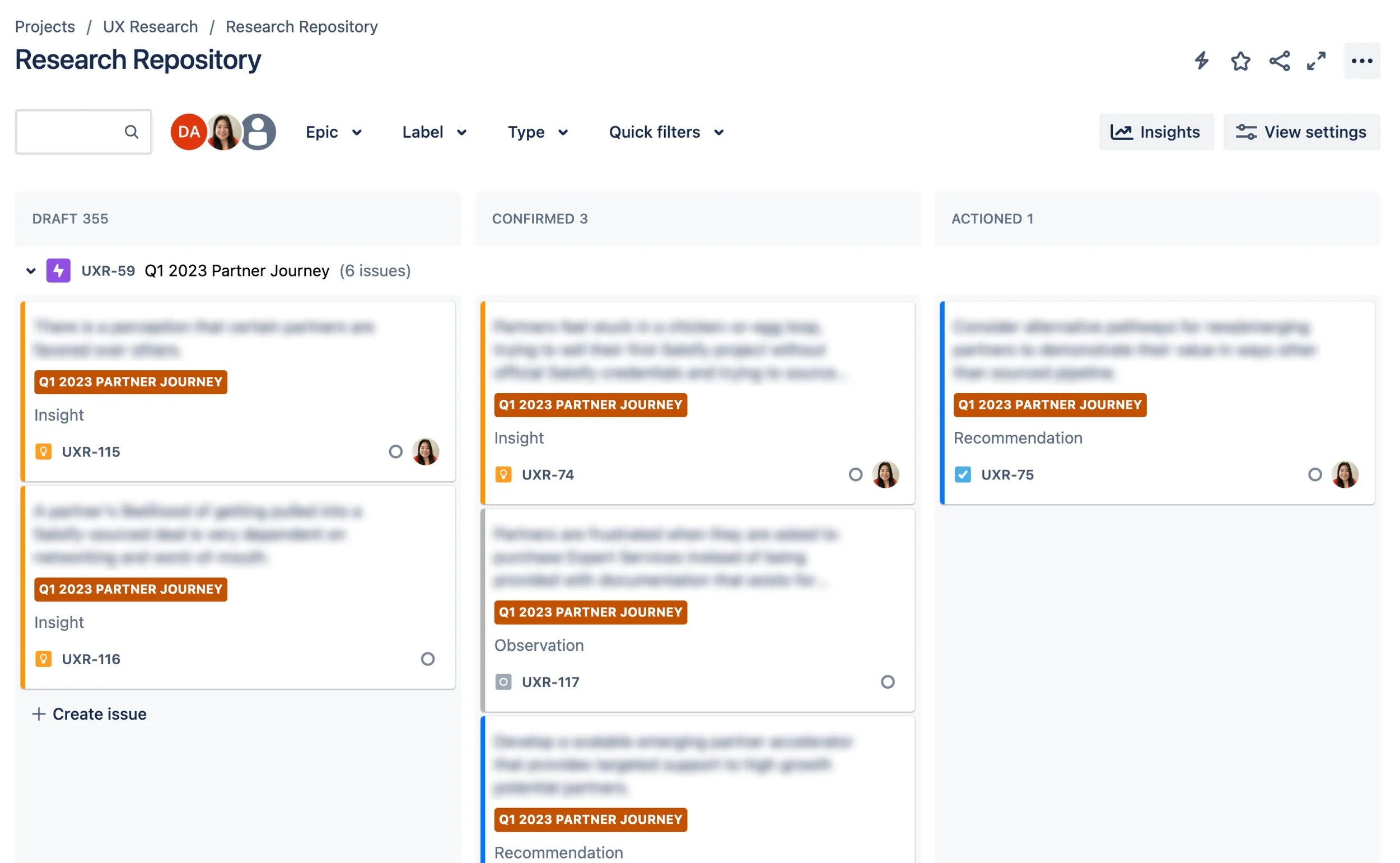
Research Repository
1. Background
The Salsify User Experience team has been using Dovetail as a repository, but with the change of interface, we—and the product team—just never really adopted it. To have more direct influence and connection to the product development process (user stories, roadmap), we saw an opportunity to set up a repository in Jira, as this tool is used by most of the R&D team.
2. What we have done
We opted for Jira as our repository because it has features like epic, issues, and tickets that align well with our requirements. Specifically, we decided to use epics to store details about parent studies. To make this setup effective, we took inspiration from existing research repositories that follow the Atomic Research structure. This inspired us to create a hierarchy in Jira, organizing different types of tickets and incorporating relevant fields.
Following the Jira update with our specifications, we conducted thorough testing on the repository using three ongoing projects. This testing phase allowed us to identify areas for improvement, leading to updates in some fields and a more streamlined status system for the tickets.
3. The solution
We established four types of tickets under the epic:
Observation: A description or summary of user behaviors, data trends, and patterns.
User request: Direct feedback from customers.
Insight: An informed explanation or interpretation of an opportunity.
Recommendation: An actionable solution.
WIth four existing status:
Draft: We are not yet confident in your conclusions.
Confirmed: We feel confident in your conclusions.
Actioned: The data has been used to make changes.
Archived: The data is obsolete or no longer relevant.



